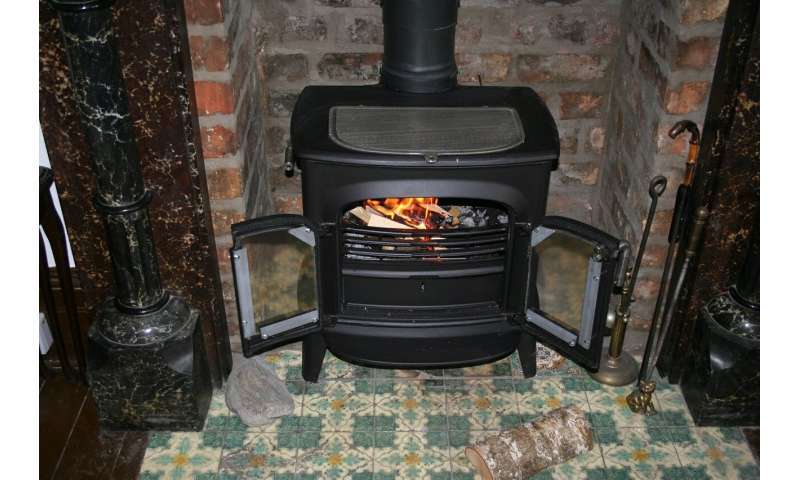Scientists measure air pollution from domestic wood burners in new study

Researchers have started a six-week study to measure airborne pollutant emissions from domestic wood burning stoves, using a dedicated laboratory-based test facility at The University of Manchester.
Atmospheric chemists from the National Center for Atmospheric Science, University of Manchester, and University of York are working together to quantify the gases and aerosols that come from stoves in people's homes.
Wood burners—the biggest sources of small particulate matter nationwide
The popularity of using wood burners has increased in recent years, in response to severe cold snaps and the rising cost of gas and electricity.
In the UK, wood burning in homes is the main direct source of airborne particulate matter less than 2.5 micrometers in diameter (known as PM2.5), and accounts for a high fraction of particles with carcinogenic potential in urban areas.
Exposure to PM2.5 particles can result in serious health impacts—especially for elderly people and people with respiratory illnesses.
Stove in a lab—a scientific test facility to capture wood burner emissions
Scientists are using a state-of-the-art test facility, in a Manchester-based laboratory, to study emissions from domestic heating stoves.
By using a wood burner in a controlled environment alongside specialized pollution monitoring equipment, researchers are replicating a range of conditions and real-life scenarios.
Dr. Marvin Shaw, research scientist at the National Center for Atmospheric Science and the University of York, said, "Recent studies of combustion in household woodburners suggest that operational conditions, such as ignition, reloading, maloperation and use of unconventional fuels are a large and unaccounted for source of pollution in the UK. This project brings together national expertise in order to understand how the operation of these wood burners affects the emissions of gas and particulate pollutants."
The high-resolution data they are collecting will begin to build a detailed insight into real-time emissions during stove operation in people's homes.
Dr. James Allan, a research scientist at the National Center for Atmospheric Science and the University of Manchester, explained, "Currently emissions predictions assume that wood burners are operated correctly and the appropriate fuels are used. However, we suspect that many wood burners are not used correctly, with people likely to overstack fuel or burn unseasoned woods. Our laboratory experiments will investigate the effects of gas emissions that condense in the air and form particulate matter after they are emitted,"
The air pollution research project they are working on, known as CondensabLe AeRosol from non Ideal Stove Emissions—CLARISE, brings together expertise in biomass burning experiments, emissions monitoring, atmospheric complexity analysis, and regional modeling.
Provided by University of Manchester